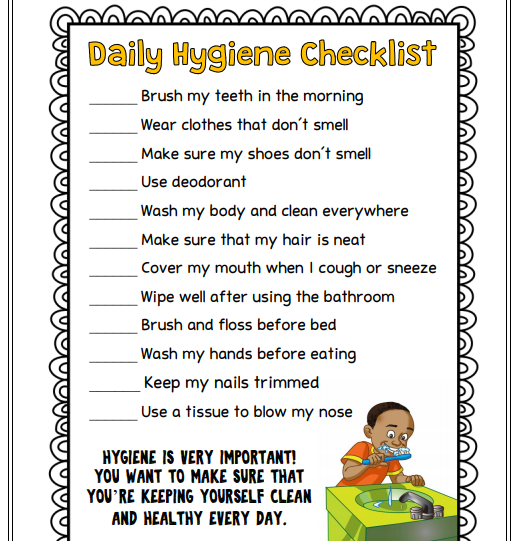 ‘Virtual Family Time/Contact: Fun Activities and Games’ guide offers a variety of enjoyable online activities for families who connect through platforms like Facebook, Facetime, Skype, and Teams. In some situations, children may be unable to be physically present with their parents or family members, necessitating the use of video calls to maintain contact. The booklet’s goal is to offer interesting interactive ideas for enhancing these virtual interactions and making them special.
‘Virtual Family Time/Contact: Fun Activities and Games’ guide offers a variety of enjoyable online activities for families who connect through platforms like Facebook, Facetime, Skype, and Teams. In some situations, children may be unable to be physically present with their parents or family members, necessitating the use of video calls to maintain contact. The booklet’s goal is to offer interesting interactive ideas for enhancing these virtual interactions and making them special.
The suggested activities and games cater to different age groups and encourage imagination, learning, and quality time together during virtual family time/contact. Parents, caregivers and family members can incorporate these ideas into their virtual sessions, whether they plan them in advance or spontaneously.
Social workers can share these activity suggestions with individuals supervising virtual family time/contact sessions on Facebook, Facetime, Skype, and Teams or directly with parents and caregivers. These activities not only provide entertainment but also facilitate relationship-building and offer learning opportunities during times of separation.
FREE PDF DOWNLOAD: VIRTUAL FAMILY TIME/CONTACT: FUN ACTIVITIES AND GAMES GUIDE
VIRTUAL FAMILY TIME/CONTACT: FUN ACTIVITIES AND GAMES LIST
Pretend Tea Party: Ask the child to host a fancy tea party with stuffed animals as guests and ask them to serve imaginary tea and snacks. Encourage your child to use their imagination to create conversations and stories during the tea party. Be one of the guests at the tea party, giving the child ‘orders’ about what to serve you.
Pretend Shop: Give a child a list of things they need to go and buy for you. As they give it to you, engage with the object – for example, if they give you a ‘biscuit,’ pretend to eat it. If they give you a hat, pretend to put it on.
Song Composition: Create a simple song together.
What’s Missing? Collect a group of 8-10 objects. Have the other player study the set of objects and then close their eyes. While their eyes are closed, remove one of the objects. Can they figure out which one is missing? Use more or fewer objects depending on the children’s ages.
Learn a New Language Together: If the child is interested in languages, you can start learning a new language together. Practice basic phrases and vocabulary during your virtual sessions.
Tell Stories Together: You and your child can take turns making up stories or telling short ones. You can begin stories with phrases like “Once upon a time in a magical forest,” or “In a faraway land, there lived a curious explorer named…”.
Guessing Game: Pick something to think about, and let your child ask up to 20 yes-or-no questions to figure out what it is. For instance, if you choose an object, like a banana, your child can start by asking, “Is it something we eat?” You’d reply with “Yes,” and the questions continue, getting more specific until they guess it’s a banana. To make it clearer, you can ask, “Is it yellow when ripe?”
Act It Out: Play a game where one person acts something out without talking, and the others guess what it is. You can act out simple scenarios like pretending to be a robot, an animal, or a famous movie character like a pirate.
Find Things at Home: Give your child a list of things to find in their house. For example, ask them to find “something soft in the living room” or “an object that you use for cooking in the kitchen.”
Simon Says: Take turns being the leader in a game of Simon Says.
Game rules – one person (could be you or your child) gives commands starting with “Simon says,” like “Simon says touch your toes.” Everyone must follow the command, but only if it starts with “Simon says.” If the command does not begin with “Simon says” (like: “Touch your toes.”) and someone still does it, they are out.
Quiz Time: Create simple quizzes with questions about things your child likes or things they learn in school. Here are some questions you can use:
- What’s your favourite animal?
- Name three colours that start with the letter ‘B.’
- How many continents are there on Earth?
- Can you spell the word ‘elephant’ backward?
- You can also ask, “What’s your best-loved book?” or “What’s your favourite subject in school?”
Cook Together: Choose a recipe and cook the same dish together, even if you are not in the same place. You can show off your meals at the end.
Music Fun: Sing songs you both like or take turns playing your favourite songs.
Show and Tell: Each time you meet, have your child pick something interesting to show and tell you about. It could be a toy, a drawing, or something they have learned.
Virtual Superhero Adventures: Have a virtual superhero training session. Each of you can dress up as superheroes and describe your superhero powers and adventures through video chat.
Virtual Safari: Share pictures of animals and wildlife from around the world. Have virtual discussions about these animals’ behaviours, food, and more.
Virtual Doctor’s Office: Play a virtual doctor-patient game through video chat. Describe your “symptoms” and “treatments” to each other, and take turns being the doctor.
Letter or Email Exchange: Encourage your child to write a letter or email to a family member or friend. You can help them with the content/spelling.
Reading Together: Choose a book and take turns reading it aloud to each other during your virtual sessions. It is a great way to enjoy stories together.
Dance Party: Put on some music and have a dance party in your own living rooms. You and your child can dance together and have a blast.
Museum Visit: Many museums offer virtual tours. Explore art and history from the comfort of your home. Discuss what you both find interesting.
Trivia Challenge: Create a trivia game with questions about your family’s history or interests. For example, you can ask, “Who in our family has a pet dog?”
Build a Fort: Encourage your child to build a fort or hideout using blankets and pillows. You can help them come up with creative ideas.
Funny Hat Day: Declare a “Funny Hat Day” where everyone wears the silliest hat they can find or create. Share a laugh over your wacky headwear.
Impromptu Talent Show: Take turns performing funny or unique talents. Whether it is telling jokes, doing funny impressions, or showing off quirky dance moves, it is all in good fun.
Silly Storytelling: Instead of a regular story, create a silly story where each person adds a sentence or phrase that does not make much sense. See where the story ends up!
Funny Face Contest: Make the silliest faces you can think of and have a contest to see who can make the funniest face. Take screenshots for a good laugh.
Dress-Up Time: Raid your closets for the goofiest outfits you can put together. Strut your stuff on the virtual runway and have a fashion show.
Funny Voices: Have a conversation using the silliest voices and accents you can think of. You might end up in fits of giggles.
Karaoke Party: Have a karaoke session where everyone sings their favourite songs, even if they’re hilariously out of tune.
Funny Debate: Choose light-hearted topics and have a mock debate with your child. For example, you could debate “Who would win in a race, a snail or a tortoise?”
Lip Sync Battle: Have a lip sync showdown where you and your child pick your favourite songs and put on entertaining performances without actually singing.
Tongue Twister Challenge: See who can master the silliest tongue twisters without stumbling over their words. Try saying, “She sells seashells by the seashore” or “How can a clam cram in a clean cream can?”
Riddle Exchange: Share funny riddles and brain teasers with each other. You can also try, “What has keys but can’t open locks?” (A computer keyboard) or “I have keys but can’t open any doors.” (A piano).
YouTube Comedy Night: Pick a few short, family-friendly comedy clips from YouTube and watch them together. Share laughs and discuss your favourite moments.
Guess the Sound: Play a game where you each take turns making unusual sounds or noises. The other person has to guess what is making the sound. For instance, you can mimic the sound of a chirping bird or a siren in the distance.
Staring Competition: Challenge each other to a staring contest. See who can go without laughing or blinking the longest.
Puppets: Use puppets to have a conversation. It is like talking through your puppet friend, making it easier for the child to chat.
Homework from School: Help the child with their schoolwork. You can assist with their assignments, like reading or math problems.
A-Z Games: Play games where you take turns naming things, like animals or foods, that start with each letter of the alphabet. For example, start with “A” and say “Apple,” then “B” for “Banana,” and so on.
Clap the Song: Think of a song and clap out its rhythm. The other player tries to guess the song based on the claps. Alternatively, hum the tune of a song until it is guessed.
Props Game: Both you and the child collect common household objects like plates or books and then sit down. Then take turns pretending these objects are something else. For example, imagine a plate as a flying saucer; hold it above your head and make “whooshing” sounds as it hovers through space. Use a toothbrush as a dinosaur tooth-cleaning tool; roar like a dinosaur while brushing your “dinosaur teeth.”
Charades: Act out words or phrases without speaking. The other player guesses what you are showing. For instance, you can act like you are brushing your teeth to represent “toothbrush.”
Pictionary: One person draws something on paper or a virtual whiteboard. The first to guess correctly takes their turn. You can choose a theme like “animals” or “sports” to make it more fun.
The Alphabet Game: Select a category, such as fruits or names. Then, go through the alphabet, naming something in that category for each letter.
For instance, for “fruits,” start with “Apple” for “A,” then “Banana” for “B,” and continue.
Rainbow Race: Race to find three items of a specific colour in your surroundings. You can make it more challenging by adding rules. For example, find three blue objects, and they must be smaller than your hand. Repeat with other colours.
Alphabet Beat the Clock: Choose a letter and set a goal for how many words you can think of that start with that letter. For example, select the letter ‘B’ and aim for 15 words. Set a timer (one or two minutes depending on the child’s age) and work together to brainstorm words that start with the chosen letter. See if you can meet your goal before the timer goes off.
Would You Rather: Take turns asking “Would you rather” questions, where both options are amusing or challenging. For example, “Would you rather be able to fly like a bird or breathe underwater like a fish?”
Virtual Hide and Seek: Play a virtual version of hide and seek. One person thinks of a hiding place, and the others have to ask questions to figure out where they are “hiding.” Questions can include, “Are you in the kitchen?” or “Are you underneath the napkins?” Since it is just pretend, any hiding place is fair game.
One of These Things is Not Like the Other: Think of a series of three or four items. One of the items should not be related to the other three. For example, you might say “Person, chair, clock, dog.” The odd one out is the stove because it does not have a face! You can make your themes more or less obvious depending on the age of the children you are playing with.
Share Fun Facts: Both of you can research and share interesting facts or trivia about a specific topic, such as animals, space, or historical events.
Category Race Pick a category: Disney princesses, flowers, types of food, whatever you find interesting! Set a timer. Then, each team has a set amount of time to write down as many things as they can think of that fit into that category. When the timer goes off, see how many you each got!
Bingo game:
- Preparation:
All players draw a 5×5 grid on a piece of paper with numbers from 1 to 75 (no repetition).
One player writes numbers 1 to 75 on separate pieces of paper and place them in a hat.
- Gameplay:
Randomly draw numbers from the hat one by one.
Call out the drawn numbers.
Players mark called numbers on their grids.
The first to complete a row, column, or diagonal by marking off five numbers shouts “Bingo!” to win.








